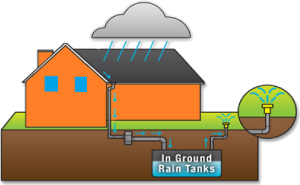“Civilization has flourished where there is water.” – John F. Kennedy
Earth is covered by 3/4th of water but most of them are good for drinking & agriculture which is the basic necessity of human beings. Humans fulfill this necessity through groundwater. In India, 45% of water for irrigation and 85% of water for domestic use comes from groundwater. But, do you know that groundwater is in rapid decline? In this article, we are going to cover water scarcity, groundwater recharge, and future challenges.
Moving toward groundwater scarcity
India is 1/6th of the world’s population which is 18%, while it has access to 4% of groundwater. From the 1950s, the government promoted using drilled tube wells to pump groundwater by providing subsidies which helped in increasing the number of drilled pumps from 1 million to more than 30 million(https://siwi.org/latest/groundwater-crises-threaten-the-poor-in-india/). It resulted in, a gigantic drop in neediness rates, developed food security, and the later financial extension somewhere in the range of 2006 and 2016 aided lift 271 million individuals out of destitution. Yet, what likewise dropped were the water tables.
78 percent of wells in Punjab are considered overexploited and the northwestern region as a whole is predicted to experience critically low groundwater availability by 2025(https://interconnectedrisks.org/). It is also estimated that from 2041, India will start depleting groundwater 3 times more which must be a serious concern. But, where there is a problem and so, there is hope. Thanks to scientists researching in this field and providing us guidelines to prevent this situation we are going to focus.
Preserving Aquifer Levels: The Critical Need for Recharge
What is an aquifer? An aquifer is a body of rock and/or sediment that holds groundwater. Saving aquifer levels is central to supporting water security and biological system well-being, featuring the basic requirement for re-energizing drives. aquifer acts as imperative underground repositories, providing water for drinking, agriculture, and industry, and keeping up with base streams in streams and wetlands.
Notwithstanding, heightening requests combined with environmental change-initiated burdens have prompted declining aquifer levels around the world. To battle this test, focusing on re-energize endeavors is basic. Managed Aquifer Recharge (MAR) techniques, like infiltration basins, recharge wells, and artificial groundwater recharge, assume a critical part in replenishing aquifer. These techniques work with the purposeful recharging of groundwater holds, guaranteeing a manageable water supply for the present and people in the future.
Human Activity That Replenishes Groundwater
Managed aquifer recharge (MAR) is the deliberate recharge of water to the aquifer for resulting recuperation or ecological advantage. Springs, porous geographical layers containing water, are normally renewed through downpours splashing through soil and rock to the aquifer underneath or by penetration from streams. The human exercises that improve aquifer recharge can be placed into three classifications:
- Unintentional -, for example, through clearing well-established vegetation, by profound leakage underwater system regions, and by spills from water lines and sewers
- Unmanaged – including storm water waste wells and sumps, and septic tank drain fields, as a rule for removal of undesirable water without considered reuse
- Managed – through components, for example, injection wells, penetration bowls and galleries for water, storm water, reclaimed water, mains endlessly water from
different aquifers that are in this way recuperated for a wide range of purposes.
Our focus will be on managed way which is abbreviated as “MAR”(MANAGED AQUIFER RECHARGE) .
MAR Techniques Types

- Infiltration ponds: include redirecting surface water into off-stream basins and channels that permit water to douse through an unsaturated zone to the basic unconfined aquifer
- Rainwater harvesting for aquifer storage: rooftop overflow is redirected into a well, sump, or caisson loaded up with sand or rock and permitted to permeate to the water table where it is gathered by pumping from a well
- Recharge releases: dams on transient streams are utilized to confine rising water and uses might incorporate the sluggish arrival of water into the streambed downstream to match the limit concerning infiltration into underlying aquifers, in this way essentially improving recharge
- Soil aquifer treatment (SAT): treated sewage profluent is discontinuously invaded through penetration lakes to work with supplement and microorganism expulsion in sections through the unsaturated zone for recuperation by wells after home in the unconfined aquifer
Economic Benefits of MAR: Cost-Effectiveness and Long-Term Savings
Managed Aquifer Recharge (MAR) offers huge monetary advantages through its expense viability and potential for long-haul investment funds. By replenishing groundwater saves and improving water accessibility, MAR decreases dependence on expensive elective water sources, for example, desalination and water imports. Furthermore, MAR projects frequently have lower functional and upkeep costs contrasted with customary water supply foundations. Studies have demonstrated the way that putting resources into MAR can bring about significant reserve funds over the long haul by alleviating the monetary effects of groundwater exhaustion, land subsidence, and water shortage-related disturbances to agriculture, industry, and civil water supply frameworks.
For instance, a study by Foster et al. (2009) features the monetary benefits of MAR in decreasing dependence on costly water imports and relieving the effects of dry seasons, eventually prompting long-haul cost reserve funds and further developing water security for networks and ventures.
MAR’s Positive Impact on Natural Habitats
Managed Aquifer Recharge (MAR) assumes a critical part in supporting environments by emphatically affecting normal living spaces and biodiversity. MAR keeps up with base streams in waterways, guaranteeing satisfactory water accessibility for sea-going biological systems, wetlands, and riparian vegetation. By replenishing groundwater holds, Blemish adds to the manageability of surface water biological systems, which rely upon groundwater release for territory upkeep and species endurance. Also, MAR projects frequently include the rebuilding of wetlands and other regular highlights, further upgrading biological system versatility and biodiversity.
conclusion
As the interest in freshwater rises and environmental change fuels water shortage challenges, progressing Managed Aquifer Recharge (MAR) innovations and practices become progressively critical. Future difficulties and open doors in Blemish envelop upgrading recharge productivity, growing the utilization of imaginative procedures, for example, counterfeit recharge and spring capacity and recuperation (ASR), and coordinating MAR with other water management methodologies.
Furthermore, resolving issues connected with water quality, subsurface portrayal, and partner commitment will be vital for the effective execution of MAR projects. Research by Dillon et al. (2014) underscores the requirement for continuous advancement and coordinated effort to conquer these difficulties and open the maximum capacity of MAR in guaranteeing water security and supportability. By embracing mechanical headways and taking on versatile administration draws near, MAR can keep on developing as a fundamental instrument for renewing groundwater assets and tending to future water the board needs.
To know how to live an environmentally friendly life, click here.
REFERENCES:
Dillon, P., Pavelic, P., Page, D., Beringen, H., & Ward, J. (2009). Managed aquifer recharge: An Introduction. Waterlines Report Series No. 13, February 2009.
Dillon, P., Pavelic, P., & Page, D. (2014). Managed aquifer recharge: An overview of issues and options. Hydrogeology Journal, 22(1), 5-17.
Sophocleous, M. (2002). Interactions between groundwater and surface water: The state of the science. Hydrogeology Journal, 10(1), 52-67.
